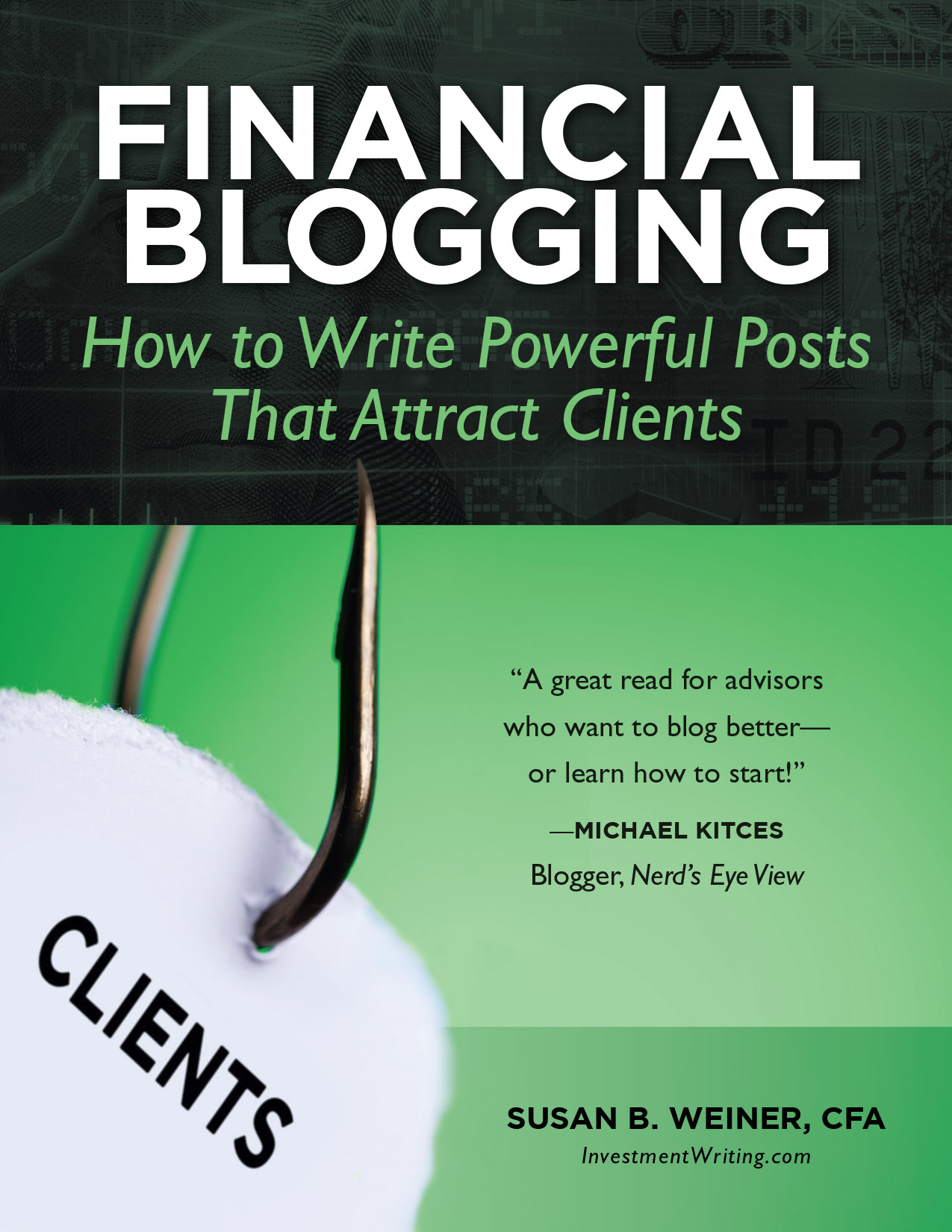Work smarter, not harder, on your blog
You’re a busy professional. You don’t have unlimited time to devote to your investment or financial planning blog. However, if you’re blogging without a strategy or plan, you’re wasting time. Advance preparation, as I explain below, will allow you to work smarter, not harder, on your blog.
Step 1. Know your goals.
Do as I say, not as I do, when it comes to blogging. I wasted time on two earlier blogs until I found my focus in helping financial marketing professionals learn to write better.
You’ll achieve better results if you start by identifying your target audience and your topic areas. Both should align with your business focus. For example, if you offer financial planning to divorced women in their fifties or older, don’t write blog posts for millennials about how to start saving in a Roth IRA account.
Step 2. Pick the right blogging frequency
Consistency counts when you blog. Your clients won’t be impressed if you blog twice a day for one month, quarterly for a year, and then sporadically thereafter. They’ll worry that you bring the same lack of commitment to your main business, as I discussed in “Woody Allen’s wisdom for successful financial bloggers.”
Pick a posting frequency that you can stick with. Not sure how often you can post? Create a cache of posts that aren’t time-sensitive before you go public with your blog.
Step 3. Develop a process
When you develop a repeatable process for your blog, you’ll invest less energy in creating each post. This is why my book, Financial Blogging: How To Write Powerful Posts That Attract Clients gives you step-by-step instructions for the following topics:
- Brainstorming ideas
- Organizing your thoughts before you write
- Writing your first draft
- Making “big picture” edits
- Making smaller edits
The book also discusses compliance, marketing, and time management.
After you develop a process that works for you, your blog posts will take shape more quickly and easily.
Step 4. Learn your blogging personality
Different approaches to blogging work best for different people. Pay attention to what works best for you, so you can do more of those things.
For example, some people enjoy writing to a detailed editorial calendar, as I described in “How to manage a group blog: Financial advisor edition.” But that approach would be like torture for me. I need some inspiration to write.
I’ve identified some techniques that work well for me. For example
- Maintaining a list of potential topics in Microsoft Outlook
- Mind mapping complex topics
- Writing drafts in a steno pad, as described in “No batteries required: My favorite blogging technique”
Don’t force yourself to use techniques you don’t enjoy—especially when better alternatives exist.
Step 5. Get help
You don’t have to do it all yourself. For example, Sheri Iannetta Cupo of Sage Advisory Group, LLC uses the help of Wendy Vissar to create customized images for her blog, as explained in “Boost your blog with original photos: The SAGE Advisory example.” Rick Kahler of Kahler Financial uses an editor. You can use my Financial Blogging book as a source of ideas for how to overcome common challenges for bloggers.
I’m not a big fan of hiring a ghost blogger. You’ll do better by letting your personality shine through in something you’ve written. You can adapt your posts to suit your skills and preferences. For example, you can write very short, opinionated pieces. Or you can create podcasts or videos.
If you’re determined to use content written by others, check out the resources in “Ready-to-use content for financial advisors.”
It’s rare for me to take on ghost-blogging outside of ongoing relationships with larger companies. However, you can hire me to critique one of your blog posts so you can learn to improve future posts.
What are YOUR best tips?
I’d like to see your best tips for working smarter, not harder, on your blog.






